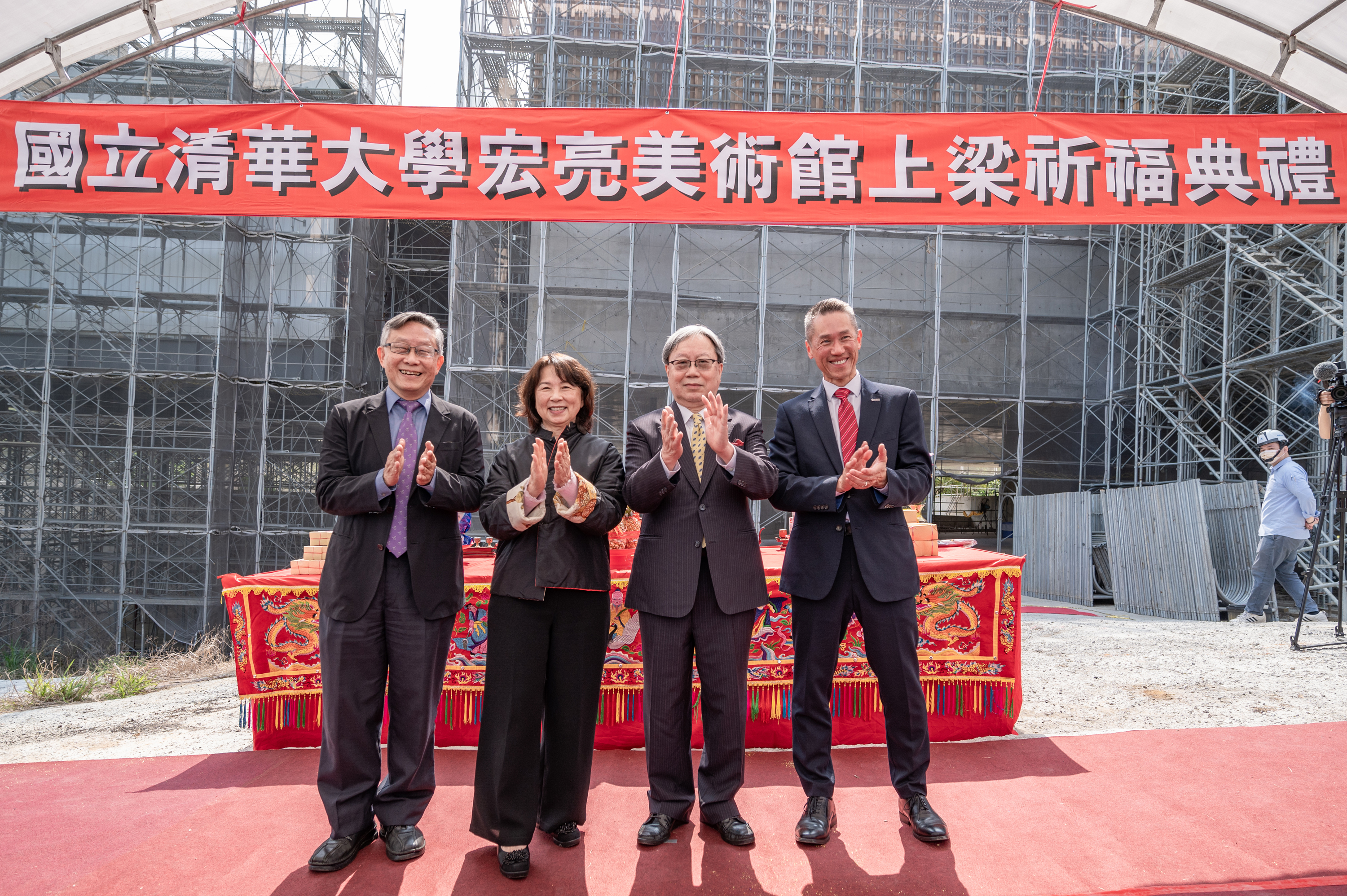HSINCHU, TAIWAN 11 April 2024 – The beam-raising ceremony was held for the Hong Liang Art Museum at National Tsing Hua University (NTHU) in Taiwan. The main structure is nearing completion and is expected to open in the first half of next year, becoming a new aesthetic landmark in Hsinchu.

The beam-raising ceremony for the Hong Liang Art Museum was held by NTHU, with President W. John Kao (right), donor Chairman Hong-Liang Hsieh, Mrs. Fen-Ching Chiu (center), and former President Hocheng Hong (left), praying for the project’s success. (Photo: National Tsing Hua University)
In addition to international exhibitions, the museum will also hold lectures, and other artistic and cultural activities, enlivening the art scene on campus while providing faculty, students, and the public with an opportunity to experience contemporary art treasures.
The museum is named after its main benefactor, alumnus Hong-Liang Hsieh, chairman of Scientech Corporation. Hsieh graduated from the Department of Physics in 1973 and was the first recipient of the Outstanding Alumni Award from the College of Science.
Accompanying Hsieh at the ceremony were his wife and the director of Scientech. In his speech, Hsieh said that NTHU is leading a renaissance, and the Hong Liang Art Museum is an important part of it. Combined with the concert hall and existing museum, NTHU is set to become a showpiece for the seamless integration of academia with the arts and humanities.
A priority in Hsieh’s vision for the art museum is sustainability. He emphasized that in addition to having goals, a cultural institution must also have a strong sense of mission and be able to continuously invest manpower, funds, and enthusiasm. With this in mind, he called on the entire school to “make the NTHU Renaissance movement a big success!”
After thanking Hsieh for his generous donation, President W. John Kao said that art is a kind of dialogue with beauty, stories, oneself, and the world. He added that with the opening of the new art museum, faculty and students will be able to have this kind of artistic dialogue right on campus every day without having to go abroad so aesthetic literacy will become deeply rooted throughout the NTHU community.
Designed by a team of architects led by Hsu-Yuan Kuo and Effie Huang, the museum will have the appearance of three earth-toned boxes rising out of the greenery opposite the Tsing Hua Laboratory.
The museum will have two stories above ground and one below, providing about one thousand pings (3,300 square meters) of floor space. The exterior walls of the first floor will be in the form of a glass curtain, and the elevators and stairs will also use transparent materials, allowing the greenery and natural light to enter the interior space.
Museum curator Su-Zhen Xie said that the building’s impressive architectural design is ideal for a large art museum and that its brisk spatial arrangement will be a boon for curating exhibitions.
The current plan is to hold at least one major international exhibition every year, with several small and medium-sized exhibitions in between, to maintain the museum’s visibility and vitality.
Xie said that the café on the first floor of the museum will have a ceiling height of 6 meters and that it is expected to become one of the most romantic university cafés in Taiwan, where faculty, students, and visitors can enjoy premium coffee while admiring the campus lawn and cherry trees through the floor-to-ceiling windows. Xie also said that she is planning to hold “Embassy Night,” especially for ambassadors and international cultural figures.
Xie said that the top floor of the museum will be ideal for holding parties, talks, and other activities, such that “students will come to see the museum as their second home—a great place to watch the stars and fall in love.” Her vision is of a museum space with a lively and diverse atmosphere that attracts faculty and students alike. The museum will also serve as an educational resource for students majoring in museum studies and art administration in the Department of Arts and Design.
During her several decades in the field, Xie has served as the curator of various major art museums, including the Museum of Contemporary Art in Taipei and the Central Academy of Fine Arts in Beijing.
The main structure of the museum is almost finished, and the next phase of the project will include interior work and landscaping. The museum is expected to be completed in the first half of next year.





